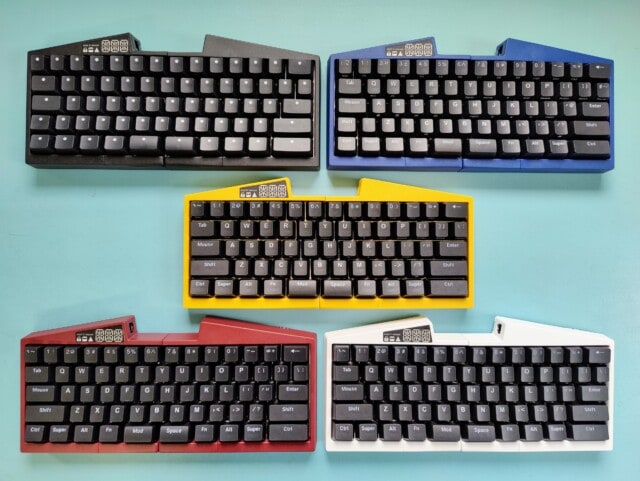Hi there, and welcome to this short monthly UHK status update!
We’ve been effectively catching up with pending orders in October and keep closing the gap.
New orders are expected to ship in January 2023, and we’ll update the delivery status page every weekend.
We’re delighted to hear from UHK 60 v2 customers as they receive their orders. If you got your UHK, tweet about it, or it didn’t happen!
Finally got my UHK v2 thanks @UltHackKeyboard. pic.twitter.com/DvBVFidnw8
— Xanderzt (@zot1881) October 27, 2022
I've been shopping around for a new ergonomic keyboard for ages and decided on the @UltHackKeyboard.
— spooky richard b brookes (@richardbbrookes) October 14, 2022
An absolute joy to use! It's made the last week of work an absolute DREAM. The best joint Christmas/birthday present anyone could get. Big, huge recommendation. pic.twitter.com/bplMVN6Roz
My @UltHackKeyboard finally arrived. And with it all the doubts vanished that came up while waiting. Like: Did I order the right switches? Will I feel comfy?... pic.twitter.com/EXIxDjJFuX
— Gerrit Meier (@meistermeier) October 7, 2022
Tweet it or it didn't happen!
— Francisco Sanabria🐋 (@piktonus97x) October 13, 2022
Amazing keyboard, thanks @UltHackKeyboard for such great quality. I love every detail about this keyboard.
Order 12270 for the curious one. pic.twitter.com/F75ka1NLvU
It’s been a couple of days since my @UltHackKeyboard arrived, and I gotta say, I’m surprised how quickly I’ve adjusted to it!
— Lydia (@PhalanxHead) October 12, 2022
Now to take up leatherwork and make a fancy travel case hehe pic.twitter.com/yt3asoqoXm
@UltHackKeyboard #GotMyUHK The V2 is amazing. Been using it now for a week. And it does not disappoint! V1 is now for the home office. pic.twitter.com/9rOfUZrhaI
— Siebren Zwerver (@SiebrenZwerver) October 11, 2022
Thanks for reading this update! We’ll keep you updated on all things UHK and plan to publish the next update at the end of November.
